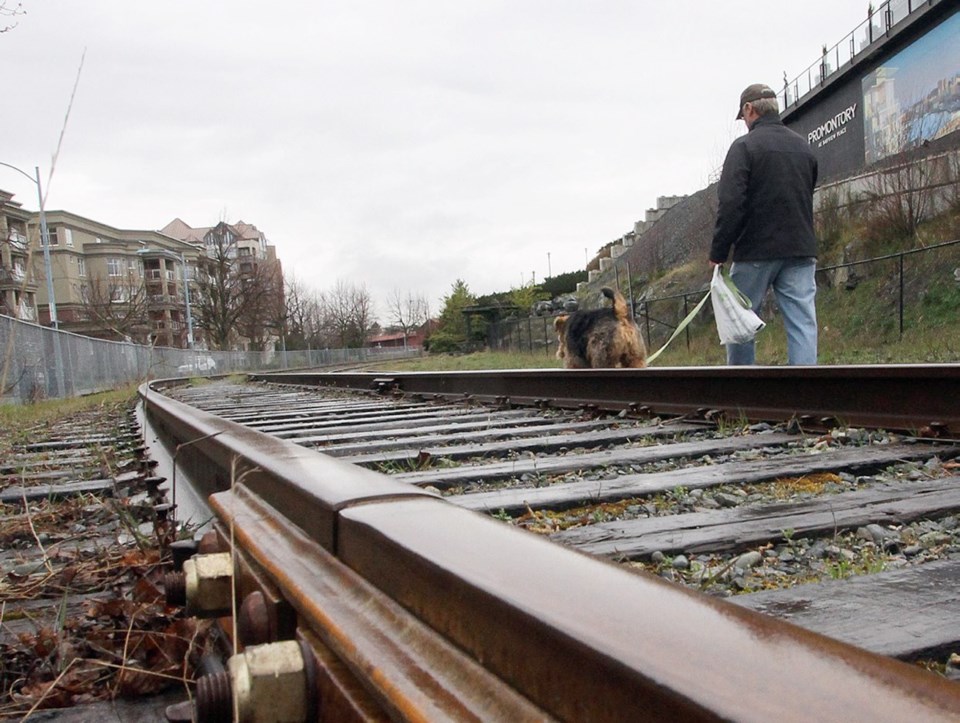Maintaining that rail on Vancouver Island is not dead, the Island Corridor Foundation is planning a detailed condition assessment of all track and bridges on the E&N Rail corridor.
Larry Stevenson, CEO of the non-profit society, says the province is on board with the idea and the ICF will be meeting this month to hammer out details.
“The province is committed to moving forward and as a first step will work with the Island Corridor Foundation to do an assessment of track and bridge conditions on the entire corridor,” Stevenson says in an update posted on the ICF website.
“It was agreed this process needs to start immediately so we will be meeting early in January to develop a plan to complete the assessment.”
The ICF, a partnership between First Nations and local governments along the E&N, aims to preserve the corridor and rebuild rail service along it. The corridor runs 225 kilometres from Victoria to Courtenay, with an extension between Parksville and Port Alberni.
Stevenson says the decision to undertake the assessment follows a December round-table meeting of Island mayors, regional district and First Nations representatives, the ICF and Premier John Horgan and Transportation Minister Claire Trevena.
Esquimalt Mayor Barb Desjardins, a Capital Regional District appointee to the ICF, said the overwhelming consensus of participants at the meeting was that rail has to be part of future transportation infrastructure for Vancouver Island.
Desjardins said participants also agreed getting rail up and running on the Island will require significant reconciliation work with some First Nations along the route.
“The historic wrongs that were done need to be in some way recognized and perhaps some understanding of compensation and how that might occur [has to be addressed],” she said.
“The second agreement was that there was an overwhelming support for that corridor to be rail. It was viewed by North Island and South Island alike as a significant economy driver for the Island.”
In his update, Stevenson says “participants agreed that the rail must be part of any comprehensive transportation plan going forward, it must include the entire island, and that the unique requirements of each region needed to be addressed within the plan.”
“Participants asked the province to commit to the development and implementation of such a plan and to do so without delay.”
Passenger rail hasn’t run on the E&N line since 2011 and several officials, including Horgan, have suggested running a commuter bus on the rail line between Langford and Victoria might make more sense than reintroducing passenger trains.
Langford Coun. Lanny Seaton, another CRD appointee to the ICF, says the proposed track and bridge assessment is a good idea.
Seaton said converting the corridor for use by buses would cost more than restoring the tracks and the ties.
“Everyone says it would be easy. But it wouldn’t be easy because in some of those places the track is too narrow [for buses],” Seaton said. “There’s only 75 per cent of the ties that need to be replaced between Victoria and Langford.”
Estimates to restore the rail have been a moving target.
The ICF, at one point, believed the rail corridor could be restored for $20.9 million in repairs.
In 2017 the ICF came up with new numbers saying restoring the line from Victoria to Nanaimo alone would cost $42.7 million — more than twice its earlier budget for the entire E&N. Fixing the rail lines from Nanaimo to Port Alberni and Courtenay would cost another $52.4 million.
Seaton says critics are quick to slam high costs to restore the rail line but says no one looks at those costs in relation to alternatives.
“What would it cost to redo the Malahat? What’s it going to cost to redo the highway? No one ever puts a cost on what it costs to run cars but everybody seems to want to jump on the band-wagon when it comes to the cost of redoing the railway,” Seaton said.
Opportunities for freight from a useable rail line are also a benefit, he added.
“You’ve got all those trucks full of gravel coming over the Malahat . . . you’re just looking for an accident,” Seaton said.
The ICF was created as a registered charity 14 years ago, when Canadian Pacific wanted to get rid of the railway lands it owned on Vancouver Island. CP donated the land and rail lines and received credit for a $236-million charitable donation, which saved it about $38 million in taxes.



